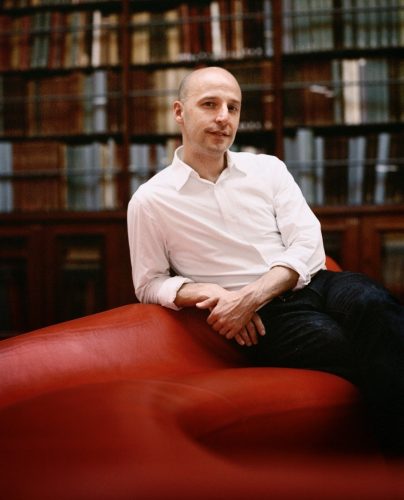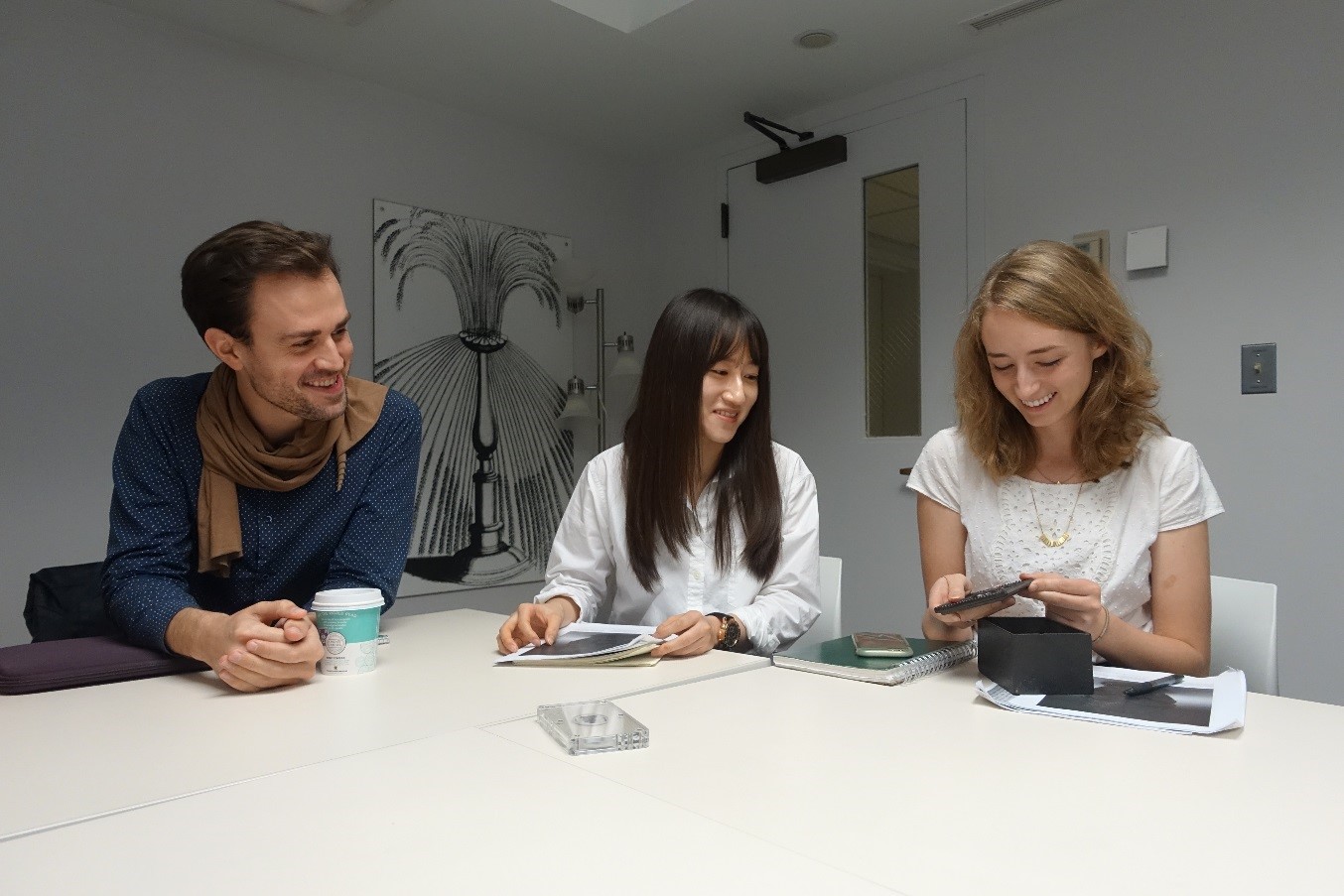Glenn Adamson Leads Course on Material Culture and Politics at ADHT
Posted on November 10, 2016 | posted by: adht
Photo by Sipke Visser
Curator and author Glenn Adamson assumed his most recent role as Director of New York’s Museum of Arts and Design in October of 2013 and rounded out a successful tenure earlier this year—one marked by significant growth for the institution’s programming and resources.
Prior to this, Adamson headed up the Research Department at London’s Victoria & Albert Museum. Here, he also curated modern and contemporary design exhibitions, including the major survey Postmodernism: Style and Subversion 1970 to 1990. Adamson also served as curator at the Chipstone Foundation from 2000 through 2005, and is currently editor-at-large for Magazine Antiques.
An advocate for the reconsideration of craft as a pervasive cultural force rather than a circumscribed artistic category, Adamson has published several books including The Invention of Craft (V&A, Bloomsbury, 2013), The Craft Reader (Berg, 2009), Thinking Through Craft (V&A, Berg, 2007), and is founding co-editor of the Journal of Modern Craft, a peer-reviewed academic journal.
This month, Adamson is teaching Objects of Dispute, a two week-long graduate seminar at Parsons School of Design that investigates the role played by material culture (and the historians who study it) in today’s political discourse.
Looking at the course description for Objects of Dispute, I got a sense that you would like to help students develop skills to identify or connect material culture to contemporary issues. Could you tell me a bit more about your goals for this two week intensive?
My hope is that the students will finish the course with more confidence and self-awareness about their role as public intellectuals. I want to frame the field of design history as one that engages with various kinds of audience and constituencies. I want to encourage the students to be advocates and to think about their possible professional pathways more openly than would normally be the case in an academic class. And that follows from my own activities because I’ve been doing a lot of things from curation and direction to journalism and criticism. I’ve been able to be active in a lot of different roles, and I feel like for the students to have a chance to consider that set of possibilities in the early stages is a very useful opportunity.
Did you have that kind of opportunity in your career?
I was able to curate some things when I was a graduate student but I didn’t really conceptualize it in this way. I wasn’t thinking about the implications of my work in a broader political or cultural context. And it was a different time.
Another thing I’ve been thinking about is that even truth has become a politically contentious issue, and how important it is that we are being honest, accurate, or factually precise in public discourse. I’ve been thinking about this class against the backdrop of the election. With the rise of the concept of fact checking, it seems to me that if you’re in a situation where facts themselves are admissible, or not (depending on one’s political point of view) then that puts historians in a very significant role. Our jobs are being politicized whether we like it or not because there’s a very large contingent in the country that don’t think that truth is the priority. Design history has also matured in such a way that you can think about its complications in a much broader sense than when I was a graduate student.
This is your New School teaching debut. How are you finding student engagement?
Students are very engaged in the material I bring to class. The New School has such a great tradition of this level of engagement in the classroom, but I think it’s especially unusual in design history. Overt politicization is more common in art history and literary studies.

Students Adrian Madlener, Binglei Yan, and Annaleigh McDonald in Objects of Dispute
Would you be able to share an example of an object that you find particularly compelling or relevant? Perhaps one that relates directly to the American political debate?
For the Chipstone Foundation we’ve been focusing on an image of a kneeling slave pleading for his freedom. It’s on the lid of a tobacco box made of iron. You could technically call it a casket. It’s a very physically heavy object, but also spiritually heavy. My colleague in Milwaukee, Natalie Wright, has been doing a lot of research and thinking about this object’s relationship to other abolitionist imagery. Josiah Wedgwood did a famous medallion with the same image, which is often run with the tagline, Am I not a man and brother? So it’s an object that, in its own historical context, is clearly on the right side of things. It’s abolitionist, it’s anti-slavery, and yet it also is forwarding an image of race that’s quite objectifying and generic, and the slave is all but naked and has this kind of submissive position. What we’re going to be doing in the Objects of Dispute course is reading that image and also thinking about how it was actually distributed through these objects. It turns out the point of it being on a tobacco box was to encourage people not to buy tobacco that was growing on slave plantations. And there are similar examples with abolitionist sugar. You could find sugar bowls that say East Indian sugar not made by slaves on them. These anticipated some of the contemporary debates we have about consumption and the political act. And obviously in a context where the dominant political direction of our time is arguably the Black Lives Matter campaign. If you’re thinking about Black Lives Matter, and then you look at this image, you think, oh my god, that was happening 200 years ago. But how would you relate the two?
Any plans to work with The New School in the future?
The second course I’m teaching at The New School in Spring 2017, is about the concept of material intelligence. It’s based on a book I’m working on right now for Bloomsbury. The thought is that as people become more and more attuned to digital interfaces and spend more of their lives before a screen, they’re becoming less literate in the material world around them. So what I’m going to be doing in that course is trying to introduce the student to a very wide range of different forms of material intelligence which could be craft expertise, or it could be expertise of a connoisseur or material scientist. Or it could be the hairdresser or the guy that runs to the hardware store around the corner. It could be a tailor. What I’m trying to demonstrate with the wide range of people is that they have shared confidences and forms of awareness that are perhaps becoming less and less respected and less commonplace.
Are there any professional projects that you’re working on at the moment or looking forward to working on in the near future?
Writing my book about Material Intelligence is one, but I don’t know the title yet. And I write a regular column for Magazine Antiques that deals with some similar topics as my Objects of Dispute course. I also have some exhibition projects, one of which also relates (very strongly) to the Objects of Dispute course. It’s a show about guns as they appear in American art. I’m still figuring out where and when that show will be.
Click here to watch The New School’s interview with Glenn and students on Objects of Dispute.
More information on Glenn Adamson’s Spring 2017 course available here.

